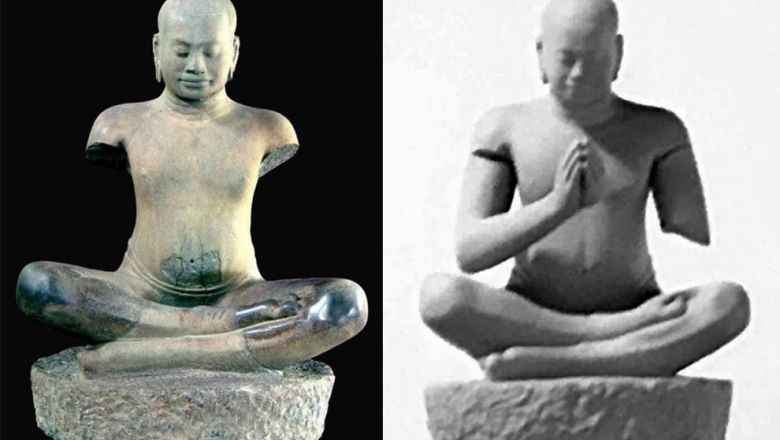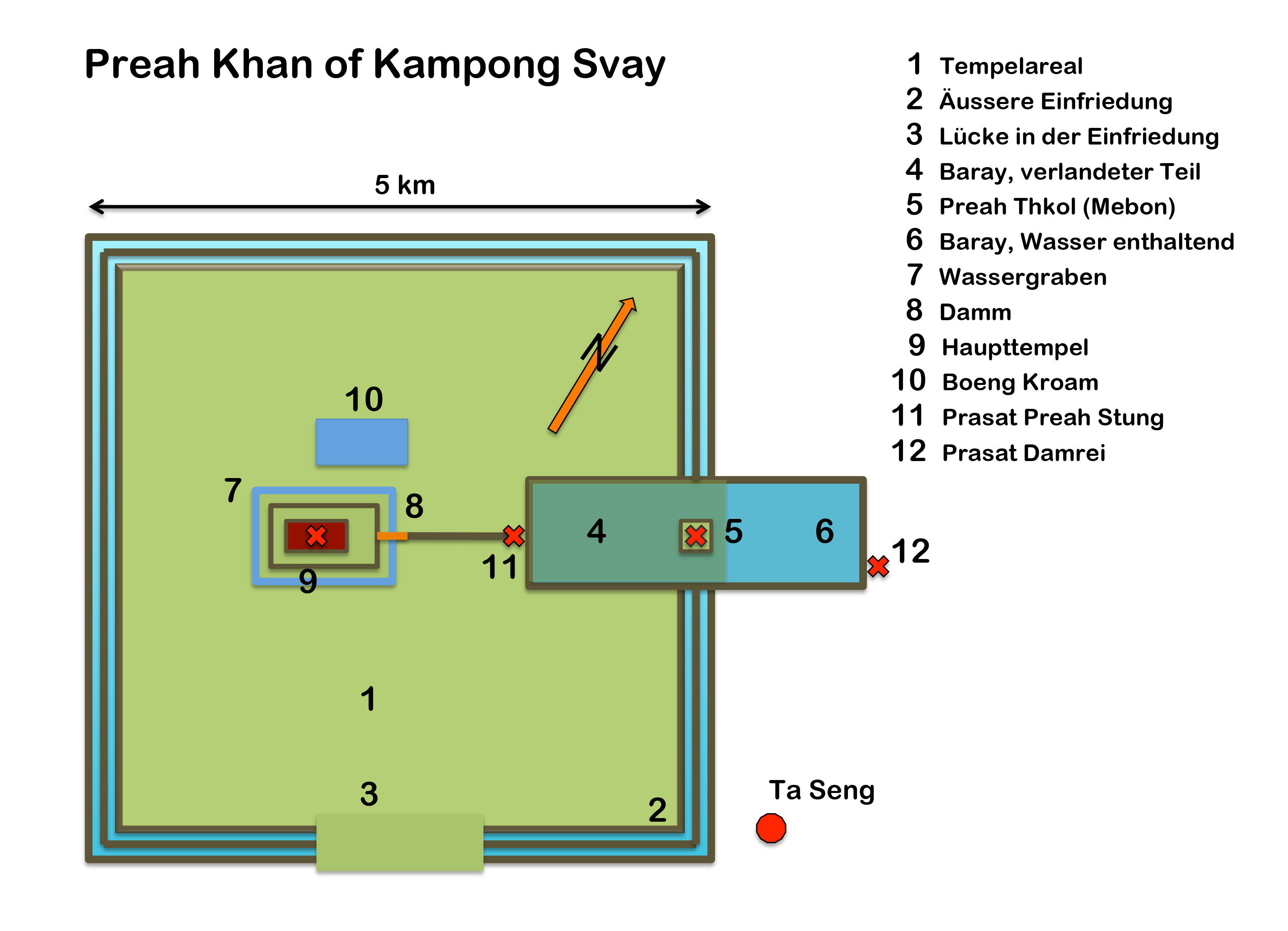|
Dharanindravarman II
Dharanindravarman II ( km, ធរណីន្ទ្រវរ្ម័នទី២; also titled ''Paramanishkalapada'') was king of the Khmer Empire from 1150 to 1160. He married the daughter of Harshavarman III, Princess Sri Jayarajacudamani. Their son Jayavarman VII was born by 1125. Dharanindravarman II was a cousin of the king he succeeded, Suryavarman II.Higham, C., 2001, The Civilization of Angkor, London: Weidenfeld & Nicolson, The Yuhai encyclopedia records that in 1155 “Zhenla-Luohu” (that is, Cambodia) sent two elephants as tribute to the Song emperor.Wang Yinglin 王應麟, Yu Hai 玉海, Taipei Hua wen shu ju, Minguo 53, 1964, Reprint of 1343 edn., vol.6, cap.154, 33. See also *Early history of Cambodia * Khmer Empire *Preah Khan Kompong Svay The archeological complex of Preah Khan of Kampong Svay ( km, ព្រះខ័ននៅកំពង់ស្វាយ) or Prasat Bakan (according to local pronunciation) or ''Bakan Svay Rolay'' is located 100 km ... [...More Info...] [...Related Items...] OR: [Wikipedia] [Google] [Baidu] |
Monarchy Of Cambodia
The monarchy of Cambodia is the head of state of the Cambodia, Kingdom of Cambodia. In the contemporary period, the King's power has been limited to that of a symbolic figurehead. The monarchy had been in existence since at least 68 AD except during its abolition from 1970 to 1993. Since 1993, the King of Cambodia has been an elected monarch, making Cambodia one of the few elective monarchy, elective monarchies of the world. The king is elected for life by the Royal Council of the Throne, which consists of several senior political and religious figures. Candidates are chosen from among male descendants of King Ang Duong who are at least 30 years old, from the two royal houses of Cambodia (the House of Norodom and the House of Sisowath). Role Cambodia's constitution, promulgated in 1993 stipulated the king's role as a mainly ceremonial one. It declared that the king "shall reign, but not govern" as well as being the "symbol of national unity and continuity". The king perfo ... [...More Info...] [...Related Items...] OR: [Wikipedia] [Google] [Baidu] |
Suryavarman II
Suryavarman II ( km, សូរ្យវរ្ម័នទី២), posthumously named Paramavishnuloka, was a Khmer king from 1113 AD to 1145/1150 AD and the builder of Angkor Wat, the largest religious monument in the world which he dedicated to the Hindu god Vishnu. His reign's monumental architecture, numerous military campaigns and restoration of strong government have led historians to rank Suryavarman as one of the empire's greatest kings. Early years Suryavarman appears to have grown up in a provincial estate, at a time of weakening central control in the empire. An inscription lists his father as Ksitindraditya and his mother as Narendralakshmi. As a young prince, he maneuvered for power, contending he had a legitimate claim to the throne. “At the end of his studies,” states an inscription, “he approved the desire of the royal dignity of his family.” He appears to have dealt with a rival claimant from the line of Harshavarman III, probably Nripatindravarman, which ... [...More Info...] [...Related Items...] OR: [Wikipedia] [Google] [Baidu] |
Yasovarman II
Yasovarman II ( km, យសោវរ្ម័នទី២) was the ruler of the Khmer empire from 1160 to 1166. He succeeded Dharanindravarman II.Higham, C., 2001, The Civilization of Angkor, London: Weidenfeld & Nicolson, In 1165, he was overthrown by the mandarin Tribhuvanadityavarman(ត្រីភូវនាទិត្យាវម្ម៌). His rule ended with his assassination by one of his subordinates. See also * Banteay Chhmar * Banteay Samré Banteay Samré ( km, បន្ទាយសំរែ ; "The Citadel of the Samré") is a temple at Angkor, Cambodia, located 400 metres to the east of the East Baray. Built during the reign of Suryavarman II and Yasovarman II in the early 12t ... References 12th-century Cambodian monarchs Khmer Empire 1166 deaths Assassinated Cambodian people Assassinated royalty Year of birth unknown {{Cambodia-royal-stub ... [...More Info...] [...Related Items...] OR: [Wikipedia] [Google] [Baidu] |
Sri Jayarajacudamani
Sri Jayarajacudamani (12th-century), was a princess and queen consort of the Khmer Empire, married to Dharanindravarman II of the Khmer Empire (r. 1150–1160). She was the daughter of Harshavarman III. She married before 1125. She best known for being the mother of Jayavarman VII Jayavarman VII, posthumous name of Mahaparamasaugata ( km, ជ័យវរ្ម័នទី៧, c. 1122–1218), was king of the Khmer Empire. He was the son of King Dharanindravarman II (r. 1150–1160) and Queen Sri Jayarajacudamani. He was ..., who was born in circa 1125. Her spouse became king in 1150, and she became queen. An inscription described Queen Jayarajadevi after her husband went into exile: :" erasceticism, her virtuous conduct, her tears, her likeness to Sita, found by her husband and then separated from him, her body thinned by observances, her religion, her devotion to him, her joy at this ultimate return." References External links Cambodian queens Cambodian Hind ... [...More Info...] [...Related Items...] OR: [Wikipedia] [Google] [Baidu] |
Jayavarman VII
Jayavarman VII, posthumous name of Mahaparamasaugata ( km, ជ័យវរ្ម័នទី៧, c. 1122–1218), was king of the Khmer Empire. He was the son of King Dharanindravarman II (r. 1150–1160) and Queen Sri Jayarajacudamani. He was the first king devoted to Buddhism, as only one prior Khmer king was a Buddhist. He then built the Bayon as a monument to Buddhism. Jayavarman VII is generally considered the most powerful of the Khmer monarchs by historians. His government built many projects including hospitals, highways, rest houses and temples. With Buddhism as his motivation, King Jayavarman VII is credited with introducing a welfare state that served the physical and spiritual needs of the Khmer people. Defeat of the Cham and coronation In 1177 and again in 1178, the Cham invaded the Khmer Empire. In 1177, Champa King Jaya Indravarman IV launched a surprise attack on the Khmer capital by sailing a fleet up the Mekong River, across Lake Tonlé Sap, and then up ... [...More Info...] [...Related Items...] OR: [Wikipedia] [Google] [Baidu] |
Harshavarman III
Harshavarman III ( km, ហស៌វរ្ម័នទី៣) was a king of Khmer who ruled from 1066 to about 1080 AD. He succeeded his elder brother Udayadityavarman IIHigham, C., 2014, Early Mainland Southeast Asia, Bangkok: River Books Co., Ltd., and his capital was the so-called ''Second Yasodharapura'', which had its center in Baphuon, built by his brother, and West Baray as its principal bàrày. He was married to queen Kambujarajalakshmi. His reign was upset by internal rebellions that finally he was not able to battle out. So Harshavarman III was the last ruler of his dynasty. His successor, Jayavarman VI, was an usurper who came from Phimai area, on the Khorat Plateau, in present-day Thailand. Harshavarman received the posthumous name of ''Sadaśivapada''. He was named in stele K.908 at Preah Khan as a maternal ancestor of Jayavarman VII, even if a long dispute rose out of this issue. Between 1074 and 1080, the kingdom had to undergo the invasion by the Champa Princ ... [...More Info...] [...Related Items...] OR: [Wikipedia] [Google] [Baidu] |
Early History Of Cambodia
The early history of Cambodia follows the prehistoric and protohistoric development of Cambodia as a country in mainland Southeast Asia. Thanks to archaeological work carried out since 2009 this can now be traced back to the Neolithic period. As excavation sites have become more numerous and modern dating methods are applied, settlement traces of all stages of human civil development from neolithic hunter-gatherer groups to organized preliterate societies are documented in the region.David Chandler, ''A History of Cambodia'' (Westview Publishers: Boulder Colorado, 2008) p. 13. Historical records of a political structure on territory that is now modern-day Cambodia first appear in Chinese annals in reference to Funan, a polity that encompassed the southernmost part of the Indochinese peninsula during the 1st to 6th centuries. Centered at the lower Mekong, Funan is noted as the oldest regional Hindu culture, which suggests prolonged socio-economic interaction with maritime trading ... [...More Info...] [...Related Items...] OR: [Wikipedia] [Google] [Baidu] |
Preah Khan Kompong Svay
The archeological complex of Preah Khan of Kampong Svay ( km, ព្រះខ័ននៅកំពង់ស្វាយ) or Prasat Bakan (according to local pronunciation) or ''Bakan Svay Rolay'' is located 100 km east of Angkor, in Preah Vihear province, Cambodia. It stands as the largest single religious complex ever built during Angkorian Era, as its exterior enclosure is over 22 km square, even if the isolated location makes it one of the less-visited Angkorian sites. History There is little historical data about Preah Khan of Kompong Svay. French scholars argued it had been founded in the 11th century, probably by Suryavarman I.Higham, C., 2001, The Civilization of Angkor, London: Weidenfeld & Nicolson, Evidence from sediment analysis suggests that the site was fully abandoned during the late 14th to 15th century, with maintenance to temples and infrastructure ceasing around the mid-14th century. It is notable for its use as a royal residence during the kingdom of ... [...More Info...] [...Related Items...] OR: [Wikipedia] [Google] [Baidu] |
King Of Cambodia
The monarchy of Cambodia is the head of state of the Cambodia, Kingdom of Cambodia. In the contemporary period, the King's power has been limited to that of a symbolic figurehead. The monarchy had been in existence since at least 68 AD except during its abolition from 1970 to 1993. Since 1993, the King of Cambodia has been an elected monarch, making Cambodia one of the few elective monarchy, elective monarchies of the world. The king is elected for life by the Royal Council of the Throne, which consists of several senior political and religious figures. Candidates are chosen from among male descendants of King Ang Duong who are at least 30 years old, from the two royal houses of Cambodia (the House of Norodom and the House of Sisowath). Role Cambodia's constitution, promulgated in 1993 stipulated the king's role as a mainly ceremonial one. It declared that the king "shall reign, but not govern" as well as being the "symbol of national unity and continuity". The king perfo ... [...More Info...] [...Related Items...] OR: [Wikipedia] [Google] [Baidu] |
12th-century Cambodian Monarchs
1 (one, unit, unity) is a number representing a single or the only entity. 1 is also a numerical digit and represents a single unit of counting or measurement. For example, a line segment of ''unit length'' is a line segment of length 1. In conventions of sign where zero is considered neither positive nor negative, 1 is the first and smallest positive integer. It is also sometimes considered the first of the infinite sequence of natural numbers, followed by 2, although by other definitions 1 is the second natural number, following 0. The fundamental mathematical property of 1 is to be a multiplicative identity, meaning that any number multiplied by 1 equals the same number. Most if not all properties of 1 can be deduced from this. In advanced mathematics, a multiplicative identity is often denoted 1, even if it is not a number. 1 is by convention not considered a prime number; this was not universally accepted until the mid-20th century. Additionally, 1 is the s ... [...More Info...] [...Related Items...] OR: [Wikipedia] [Google] [Baidu] |
.jpg)



